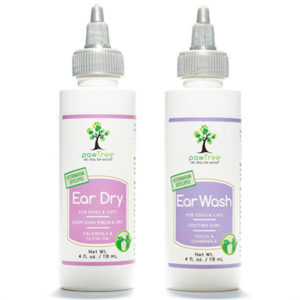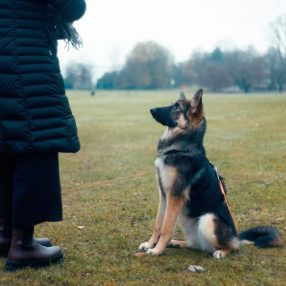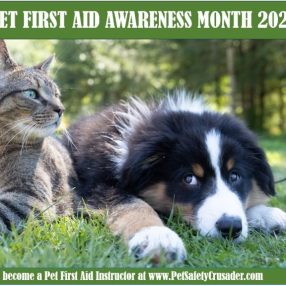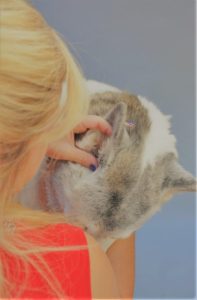
Paws down, most would rate smell as the #1 most important canine sense, but a close second may be hearing. If you could hear what your dog hears, you would have a superpower! Dogs use their ears to listen for prey and listen for danger, so it is tuned to high-pitched squeaks and rustlings. No wonder my best buddy Haiku never missed the opportunity to show up in the kitchen when potato chips or candy bar wrappers are opened.

- Jack hammer hurts humans 130+db but 85+ hurts dog ears
- Barking dogs at a shelter 85-110dB
- Ultrasonic flea collar sends out pulses of sound 30-50Hz
While dogs have 18 muscles for moving their ears, cats have more than 30, and can rotate their as much as 180 degrees, and because of those muscles, a cat’s ears are a good way to detect his or her mood.
Taking sound to a different level, really more for the human, but…allowing your dog to have control of his needs is good for mental health. A great example is to provide a bell or other noisemaker, and train your dog to ring it when he needs to answer nature’s call. You could provide different sounds for play, a toy or when doggie wants a treat. One of Haiku’s long ago brothers, Rex, excelled at bringing his dad and me the stuffed frog, the squirrel stuffie or the frisbee on command as he learned to associate the sounds they made with the name we called his toys.
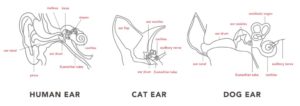
Now that we know about how excellent our pet’s hearing is, let’s talk about the ear itself! In both dogs and cats, the ear canal is shaped like a capital “L” rather than angling down like our human canals do. Therefore, moisture, dirt and debris can become more easily trapped and hard to get out without veterinary intervention. When bathing your pet, carefully place large cotton balls in the ears to prevent water from getting in and take care to always dry pet ears after swimming.
- Head shaking
- Scratching at the affected ear
- Dark discharge
- Odor
- Redness and swelling of the ear canal
- Pain
- Itchiness
- Crusting or scabs in the ears
How to Clean Your Dog or Cat’s Ears
With one hand, gently pull your pet’s ear flap (the pinna) up and angle it slightly back toward the top of the head. This will help straighten the ear canal. Give a good sniff (a healthy ear should not smell) and take a look inside to notice signs of dirt, waxy debris or redness. Should the ear smell bad, look really red or infected or should you see the presence of black specks resembling pepper or coffee grounds, get your BFF to the vet. Those small specks are the dirt left behind by ear mites and likely, your pet has been quite miserable!
If your pet’s ear however, does not appear to be harboring parasites or infection, dampen a gauze square with ear wash and place in the outer ear canal down to your first knuckle, gently wiping away dirt and wax. It is just too easy to push debris and wax further down into the ear canal if you use a cotton swab so don’t! If your gauze comes out dirty, take a clean one, moisten, and wipe again until the ear looks clean. Take care not to get excess liquid down the ear canal. I know, many products actually say to fill the ear canal with the cleaner, rub the ear gently and then let your pet shake, but 1) By doing so, you are flushing everything in the ear canal down onto the ear drum, and 2) If they don’t shake it out, it’s going to cause an infection!
In the past, I was an advocate of 1:1 water and white or apple cider vinegar, but experience is showing us that vinegar is acidic and can sting. Especially since our pet’s outer ear flaps may have tiny little cuts from scratching with their own nails. Therefore, rubbing alcohol should be avoided as well. The best product is calming and dissolves wax. Kiko and I give four paws up to pawTree’s Ear Wash & Ear Dry. Veterinarian created, the wash contains all natural ingredients which are GRRRReat for your dog or cat! Yucca reduces inflammation and allergic reactions, Aloe Vera is used to treat diaper rash in babies, but is also used in veterinary medication to reduce inflammation and/or swelling of inner ear tissue! Chamomile has anti-inflammatory and anti-bacterial properties and contains sedatives, so again is a great natural choice for tender tissue. Tea Tree Oil is an effective cleaning agent and mites hate the smell! Of course though, you should only use in veterinarian-developed products like this ear wash in which tea tree oil is diluted to pet-safe amounts. Clove Oil is an analgesic so reduces pain while Echinacea contains antimicrobials and boosts your pet’s body to resist infection.
Since keeping both dog and cat ears dry is imperative to a healthy ear canal, finish up with Ear Dry! Just a few drops in each ear quickly dry to a fine powder absorbing any moisture left behind by the cleaning.
Downward ear dogs should have their ears checked weekly to see if a cleaning is needed. Most cats and dogs with upright ears may get away with just one a month, but if your pet is prone to issues, please check more regularly.
KIKO TESTED & PET SAFETY CRUSADER APPROVED! If this is your first order, get 20% off using code: INTRO4U at https://pawtree.com/thepetsafetycrusader/product/2303
